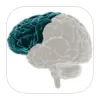Take a look inside 6 images
iNeuron
Pros: Neuroscience concepts are built and reinforced through explicit instruction and practice.
Cons: iNeuron is limited to a very specific NGSS content standard.
Bottom Line: Either individually or in groups, students can build their own neural circuit.
iNeuron is best for middle school teachers working on the Disciplinary Core Idea (DCI) of Information Processing for the Next Generation Science Standards (NGSS). AP and IB Biology teachers and AP Psychology teachers may also find it useful as an introductory task. Students can get started independently with minimal support. Using the Andamio Dashboard, teachers can track student progress and group students appropriately.
The group play mode provides a powerful collaborative opportunity. Each member of the group controls a different part, so they cannot complete the challenge unless they work together.
iNeuron is an app that takes middle and high school students through both content and circuit-building challenges to help them learn about neuroscience. Content challenges ask students to click through slides and read about how nerve cells function and develop. Circuit-building challenges allow kids to apply their new knowledge. They might build a circuit and flex the arm by connecting it to the brain through different types of neurons. This can be done through individual or group play. If group play is selected, all students must participate and work together to complete the circuit.
iNeuron was developed in partnership with the University of Minnesota. The developers made intentional efforts to connect with and motivate students. Initially, students are given the choice of being a basketball player, a violinist, or a chemist. Their selection continues as a theme throughout the game, with students observing the way their brain changes while learning their selected skill. Attempting to hook student interest, iNeuron poses initial multiple-choice questions for students to guess. Students earn points every time they click as directed.
Students are also able to track their own progress. Periodically they're asked multiple-choice questions that check for understanding of the text they read previously, and kids receive immediate feedback on their selection. While most of the iNeuron game involves very directed challenges, the Free Play section lets kids get creative, inventing their own circuits.















